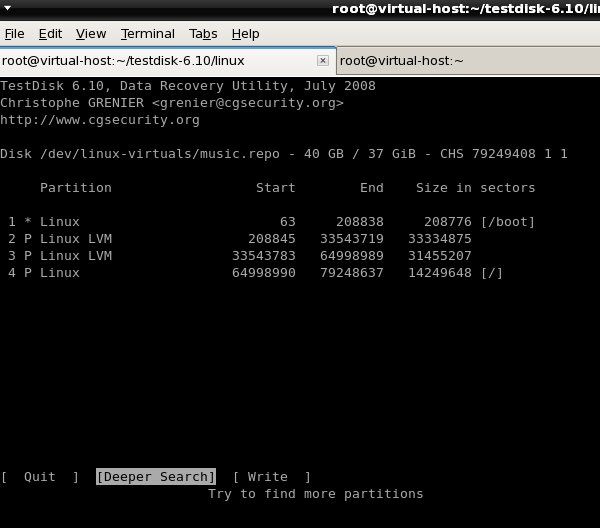

A Host Computer to run the Data Recovery program.If the corrupt disk is actually a removable media like an External HDD, or a USB flash drive, then you can just connect it your computer, and start using it.Install and run TestDisk from that Linux Live USB. If the disk is unbootable, then you have to boot your computer using a Linux Live USB.If you are in the early stages of disk loss, or if you have accidentally deleted or lost a partition then you can run TestDisk from within windows.Extract the downloaded TestDisk Zip (.zip file).Download TestDisk from their official download page mentioned below:.Locate ext2/ext3/ext4 Backup SuperBlock.Undelete files from FAT, exFAT, NTFS, and ext2 filesystem.Copy files from deleted FAT, exFAT, NTFS, and ext2/ext3/ext4 partitions.Rebuild FAT12/FAT16/FAT32, and NTFS boot sector.Recover FAT32, and NTFS boot sector from its backup.Fix FAT tables, and MFT using MFT mirror. Fix partition table, and recover deleted partitions.Thorough Disk Scanning and Data Recovery.Use TestDisk to Recover Lost Data and Partitions from Corrupt and Damaged Disks.The data recovery can take anywhere from a few minutes to a few days depending on the state of the disk being recovered and the specifications of the host computer. It is a true cross-platform software – available for DOS, Windows 9X family, Windows NT4, 2000, XP, 2003, Vista, 2008, 7, 8, 8.1, 10, Mac OS X Intel, Mac OS X PowerPC, Linux, FreeBSD, NetBSD, OpenBSD, and SunOS.

This program has no colourful icons, animations, or other inviting GUI elements that most users like. Using TestDisk can prove to be a daunting task for the first time users as it works only in a command prompt/terminal window. There are no data recovery limits, no pro versions, no ads, no promotions in this great program. TestDisk is an open-source program, and is released by its development company, CGSecurity, under the GNU GPL license.


 0 kommentar(er)
0 kommentar(er)
